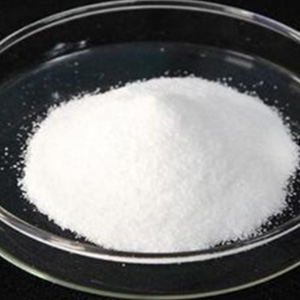
SnF2 -- 156.71
Tin fluoride (SnF2) [7783-47-3].
Stannous Fluoride contains not less than 71.2 percent of stannous tin (Sn ++), and not less than 22.3 percent and not more than 25.5 percent of fluoride (F), calculated on the dried basis.
Identification:
A: To 5 mL of a solution (1 in 100) in a test tube add 2 mL of calcium chloride TS: a fine, white precipitate of calcium fluoride is formed.
B: Mix on a spot plate 2 drops of a solution (1 in 100) with 2 drops of silver nitrate TS: a brown-black precipitate is formed.
C: Add 1 drop of a solution (1 in 100) to 2 drops of mercuric chloride: a white, silky precipitate is formed. On further addition of the solution (1 in 100), a brown-black precipitate is formed.
pH: between 2.8 and 3.5, in a freshly prepared 0.4% solution.
Loss on drying: Dry it at 105C for 4 hours: it loses not more than 0.5% of its weight.
Water-insoluble substances: Transfer about 10 g, accurately weighed, to a 400-mL plastic beaker, add 200 mL of water, and stir with a plastic rod for 3 minutes, or until no more solid dissolves. Filter through a tared filtering crucible, and wash thoroughly, first with ammonium fluoride solution (1 in 100), then with water. [NOTE—Prepare and use the filtering crucible in a well-ventilated hood.] Dry the residue at 105C for 4 hours, cool, and weigh: the weight of the residue does not exceed 0.2%.
Antimony:
Rhodamine B solution: Dissolve 20 mg of rhodamine B in 200 mL of 0.5 N hydrochloric acid.
Standard preparation: Transfer 55.0 mg of antimony potassium tartrate, accurately weighed, to a 200-mL volumetric flask, dissolve in water, dilute with water to volume, and mix. Transfer 5.0 mL of this solution to a 500-mL volumetric flask, add 6 N hydrochloric acid to volume, and mix.
Test preparation: Transfer 1.0 g of Stannous Fluoride, accurately weighed, to a 50-mL volumetric flask, add 6 N hydrochloric acid to volume, and mix.
Procedure: Pipet 5 mL each of the Standard preparation and the Test preparation into separate 125-mL separators, add 15 mL of hydrochloric acid and 1 g of ceric sulfate, and allow to stand for 5 minutes, with occasional shaking. Add 500 mg of hydroxylamine hydrochloride, and shake for 1 minute. Pipet 15 mL of isopropyl ether into the mixture, shake for 30 seconds, add 7 mL of water, and mix. Cool in a water bath at room temperature for 10 minutes, shake for 30 seconds, allow the layers to separate, and discard the aqueous phase. Add 20 mL of Rhodamine B solution, shake for 30 seconds, and discard the aqueous layer. Decant the ether layer from the top of the separator, and centrifuge, if necessary, to obtain a clear solution. Concomitantly determine the absorbances of the ether solutions from the Test preparation and the Standard preparation at the wavelength of maximum absorbance at about 550 nm, with a suitable spectrophotometer, using water as the blank: the absorbance of the Test preparation does not exceed that of the Standard preparation (0.005%).